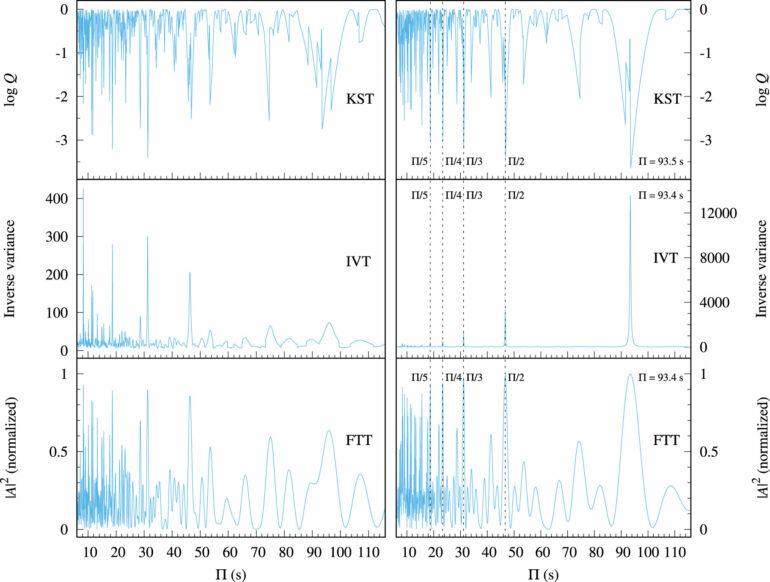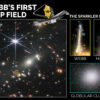Researchers from the Yunnan Observatories of the Chinese Academy of Sciences (CAS) have conducted a detailed asteroseismic analysis on an extremely low-mass white dwarf (WD) that exhibits suspected pressure mode (p-mode) pulsations. They not only detect the abundance profiles inside the WD, but also provide theoretical support for the reality of the p-modes.
The study was published in The Astrophysical Journal.
Some WDs have been found to exhibit pulsations. One type of pulsation is the p-mode with high frequency, and the other is the gravity mode (g-mode) with low frequency.
The periods of p-mode pulsations are usually in the order of seconds or less on WDs, which makes it a challenge to detect these pulsations. However, for low-mass WDs, the periods of p-mode pulsations can be as long as 100 seconds and has an observable amplitude.
SDSS J111215.82+111745.0 is an extremely low-mass WD. Two shortperiod pulsations, 107.56 seconds and 134.275 seconds, were detected on this star. If the reality of these two suspected p-mode pulsations is confirmed, they would be the first p-mode pulsations observed on a WD.
In this study, the researchers tried to provide strong support for the confirmation of these suspected p-mode pulsations through modeling and analysis.
They made a detailed asteroseismic modeling for SDSS J111215.82+111745.0, in which the hydrogen abundance profile was taken as a variable. They took the whole set of seven pulsating periods (two p-modes and five g-modes) into account and fitted them with the models’ eigenfrequencies.
The two suspected p-modes were well represented in the best-fit model. They have found a model with p-mode pulsations consistent with the periods observed on SDSS J111215.82+111745.0, which provides theoretical support for the reality of the two p-mode pulsations.
Moreover, the main parameters, M = 0.1650 ± 0.0137 solar mass and Teff = 9750 ± 560 K, and the chemical profiles of this star were determined from the best-fit model.
The stellar parameters determined from their model were in good agreement with that derived from spectroscopy and with the results of other asteroseismic analysis.
More information:
Jie Su et al, Asteroseismology of the Pulsating Extremely Low-mass White Dwarf SDSS J111215.82 + 111745.0: A Model with p-mode Pulsations Consistent with the Observations, The Astrophysical Journal (2023). DOI: 10.3847/1538-4357/aca533
Provided by
Chinese Academy of Sciences
Citation:
Theoretical support for reality of pressure mode pulsations on a white dwarf (2023, February 24)



